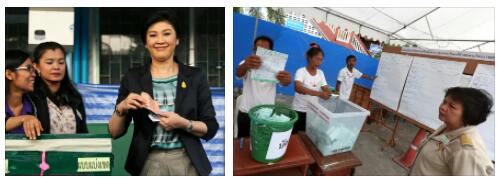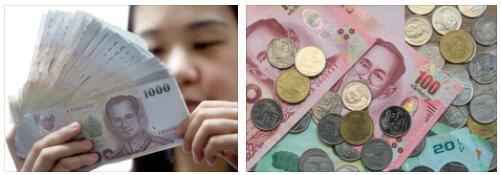Thailand Education and Health
Independence Day: Never colonized
Head of state: King Maha Vajiralongkorn
Head of government: Prayuth Chan-ocha
Political system: Military dictatorship
Democracy Status Index (BTI): Rank 115 of 137 (2020)
Corruption Index (CPI): Rank 101 of 180 (2019)
Estimated GDP: US $ 524.0 billion (2019)
Per capita income (purchasing power parity): 18,463 US $ (2019)
Human Development Rank (HDI): Rank 77 (of 189) (2018)
Proportion of poverty (national poverty line): 9.9% (2018)
Distribution of income (Gini coefficient): 36.4 (2018)
Economic Transformation Index (BTI): Rank 41 of 136 (2020)
Proportion of literate adults: 92.9% (2018)
Major religions: Buddhism (95%), Islam (4%), animism
Urban population: 49% (2017)
Life expectancy w / m: 79/72 (2018)
Gender Inequality Index: 77 (of 159) (2019)
Number of births: 1.5 / woman (2017)
Child mortality (per 1000): 10.5 (2018)
Education
The education system in Thailand is highly contradictory. On the one hand, it is well developed and modern: comprehensive schools and compulsory schooling up to the ninth grade, over 300 universities, even a government program that promises tablet PCs for every student. On the other hand, the educational methods are outdated: frontal teaching, a hierarchical and bureaucratic understanding of education and a high number of exams are widespread. An education crisis is identified, which is also reflected in poor PISA scores (rank 50 out of 65). For years there have been repeated educational reforms announced, but which do not affect the structurally anchored conservatism and therefore bring about little innovation. In primary and secondary schools, both students and teachers are required to wear uniforms – obedience is very important. In the vocational training is increasingly trying to meet the needs in the economy to adjust. Thailand has a very well developed network of universities. However, the approximately two million students have between 15,000 and 145,000 Baht (300-3,600 euros) tuition feespay – for many parents who earn normal wages, this is unaffordable. In this way, the education system cements existing inequalities. Educational reforms of the military junta aim to establish “Thai values” in the curriculum. History that does not serve nation-building is hardly taught, as the faux pas with images of Hitler have shown. The school is also criticized as a place of bullying and bullying. On December 1, 2020, the first nationwide action by students against the uniform requirement took place.
Health and welfare
In addition to traditional medicine, Thailand, as a developed country, has a correspondingly high level of health care. However, the social security systems such as old-age provision, health insurance and social security lagged behind economic growth and for a long time were privately regulated by the family. Only certain groups, such as civil servants, had state health insurance. Unemployment benefit is still not provided. For the poor who could not afford private health insurance, illness was a major risk that could quickly lead to debt. That changed in 2001 when the Thai-Rak-Thai government introduced a tax-financed general health care system called the 30 baht program. So everyone should get all the necessary treatment for the equivalent of 80 cents. In parallel to this basic care, Thaksin also developed the commercial health sector. Thailand was to become a “medical hub” for the region with state-of-the-art private hospitals. Health tourism (dental treatments, care for the elderly, plastic surgery) became a booming industry, which became problematic for basic care, for example, when doctors were poached from public hospitals. A particular health problem is HIV / AIDS, which very quickly became a mass epidemic in the 1980’s. But Thailand was also set up for a very successful awareness campaign known, through which the number of new infections could be contained. Even so, over half a million people are infected today for whom access to anti-retroviral drugs is vital. PLHA groups led political disputes against the patenting of HIV drugs and were able to successfully enforce state production of generic drugs. After Thaksin’s fall, the military regime renamed the 30 baht program “Universal Coverage” – but it does not dare to encroach on basic services for everyone.
Flag and other national symbols
The national flag of Thailand was introduced under absolute monarchy in 1917, when Thailand was still called Siam. The colors are supposed to symbolize nation (red), religion (white) and monarchy (blue). The national coat of arms consists mainly of the Hindu Garuda. The monarchy and Buddhism are also considered national symbols. A symbol steeped in history is the democracy monument in Bangkok, which General Phibun had built in memory of the 1932 revolution. The memorial has repeatedly been the location for important democratic movements – such as in 1973, 1992 and 2010. The contradictions of national symbolism also come to light in the national anthem. While the text of the national anthem is purely nationalistic and lacks any reference to the king, the playback of the song (e.g. in the cinema) is supported by images of the king, the military and Buddhist monks.



